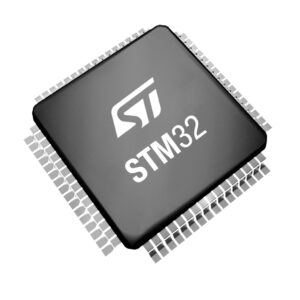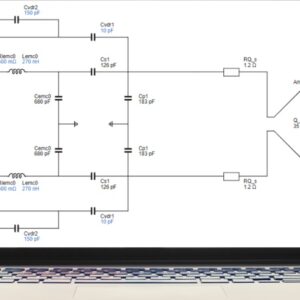To improve the accessibility of our content, please find the audio version of this blog post.
“Mission Critical” is no longer the hallmark of niche products but the rallying cry of increasingly common embedded systems. Hence, we sat down with NeuronicWorks (NWI), a Canadian ISO 9001:2015 certified design house and member of the ST Partner Program, to learn how they deal with this rising trend. Indeed, a few years ago, very few systems passed stringent reliability, safety, and security specifications. Only aeronautics, medical, and a handful of other fields demanded “mission-critical” applications. Today, even designers of consumer products must deal with increasingly demanding standards and higher customer expectations. Security, safety, and reliability occupy center stage, and failing to address them can bankrupt entire organizations.
And that’s far from the only new trend designers must address. As our latest sustainability report demonstrated, engineers must improve their environmental and societal impact. Moreover, any form of “planned obsolescence” can severely damage a brand. Not rapidly patching a security vulnerability can be catastrophic. IoT may also demand that products run for years, if not decades, with little maintenance. As a result of these new trends, designers must face one of the greatest challenges: making a system future-proof. Let us, therefore, explore three lessons NeuronicWorks and STM32 can teach about making products reliable, recyclable, and energy efficient.
Table of Contents
Lesson 1: Create the Right Identity
The Importance of NeuronicWorks’s Beginnings
NeuronicWorks’ story is interesting because the company started by first focusing on control automation, one of its founder’s areas of expertise. Too often, startups or smaller enterprises feel their size works against them. However, the design house proves there’s merit in focusing on specific design values. As they explained, it helped them develop the right culture that led them to prioritize reliability, recyclability, and energy efficiency, among other DFX (Designing for Excellence) principles. It’s also a path that leads to growth. Today, NeuronicWorks expanded its operations to add in-house PCB assembly and Box Build services in Canada. It’s thus a meaningful step forward for a company that decided to polish its processes to prioritize its values.
The Role of the ST Partner Program
While a company’s organization and processes are critical, choosing the right partners is equally important. NeuronicWorks shared how designing around recyclability, energy efficiency, and reliability necessitates a strong relationship with components manufacturers. As a result, the ST Partner Program plays a unique role because it opens a direct conduit with ST and our other partners. As the Canadian company explained, the ability to get a wide range of STM32 microcontrollers and to benefit from ST’s 10-year commitment is essential. Indeed, offering recyclability and reliability starts with the ability to support a product from “cradle to cradle”.

Lesson 2: Adopt a Human-Centric UI and UX
The Need to Prioritize Functionality

Developing a groundbreaking solution means nothing if the end-user finds it too complex to utilize and the customer judges it too cumbersome to implement. Similarly, creating a technical marvel is pointless if supporting it through its life cycle proves impossible. Put simply, NeuronicWorks explains that the beginning of a project often looks very different from the end. As a result, designers prioritizing DFX principles must prioritize flexibility. For instance, the pin-to-pin compatibility within a family of STM32 devices means engineers can easily change components with minimal alterations to the code and no modifications to the PCB.
The Benefits of Choosing the Proper Tools
Increasingly, a human-centric design will require a display and a graphical user interface. Microcontrollers can now handle more complex animations and more detailed assets. As a result, designers must often include a visual component. NeuronicWorks thus uses TouchGFX. The company also explained leveraging ST tools like STM32CubeMX, using STM32CubeIDE, and more. While NeuronicWorks often creates applications from scratch, the company must also implement its vision quickly to focus on its core values. Consequently, its engineers continuously optimize their workflow. For example, using STM32CubeMX means not having to spend an excessive amount of time on MCU configuration. Similarly, the Canadian company also uses ST software packages to implement security and cloud features.
Lesson 3: Learn to Talk and Listen to Customers
The Drive to Go Beyond the Trends
While designers play a significant role in achieving DFX principles, end customers also have a crucial part to play. Hence, NeuronicWorks stressed the importance of communicating with their clients and their clients’ clients. For instance, teams must understand what end-users will need and want from their experience, which may mean revisiting fundamental assumptions. If clients ask for Wi-Fi, a designer must understand that they may truly want Internet connectivity and suggest more relevant technical solutions to reach that goal. It’s only by understanding what clients genuinely require that teams can better advise them to create a product that will last far longer than the latest trends or buzzwords.
The Imperative to Adequately Gauge Security Needs

Beyond design expertise, engineers must have a strong understanding of the latest technological developments. For instance, many clients may completely ignore security or want features they don’t fully understand. Indeed, too many still fail to grasp that security is essential and very far-reaching. As a result, NeuronicWorks explained that they build their prototype with security in mind. Their team uses ST’s crypto library, the STSAFE secure element, secure firmware installs, and other STM32Trust features, among other tools. Not every project will benefit or require the same level of security. However, designers ought to understand their client’s needs and anticipate threats to protect them during the product’s entire life cycle.




